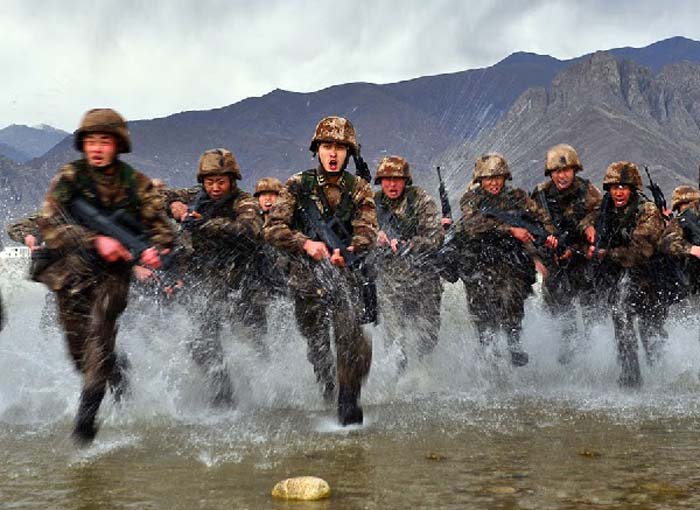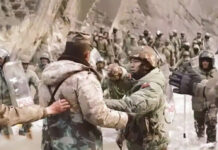(TibetanReview.net, Aug27’21) – As India prepared to invite the Chinese side for a 13th military commander-level talks to address the dispute in the Hot Springs area, one of several outstanding friction points in the Ladakh border region, Chinese experts have said a recent joint operation drill in which the People’s Liberation Army in Tibet deployed more than 10 combat units to seize a battlefield from their “enemy” on a peak in the Himalayas was designed to send a warning to India, reported indiatoday.in and the scmp.com Aug 26.
An invite is being sent to the Chinese for the fresh military commander-level talks to address the dispute in the Hot Springs area. This would be the last of the new friction points to be resolved that emerged post-May 2020, said the indiatoday.in report.
The report said that all along the Line of Actual Control (LAC) with Chinese occupied Tibet, there were multiple disputed points, including the four new friction points and some legacy ones like the Depsang Plains, which are still outstanding.
While China wanted separate negotiations on new and legacy disputed areas, India has been talking about them jointly, the report said.
India and China carried out the process of troop disengagement in the disputed region of Gogra Heights in Eastern Ladakh over Aug 4-5, following the 12th round of talks. This completed the 3rd disengagement from the Ladakh border standoff in new disputed areas, but China remained adamant on a 4th friction point, on which India is now seeking talk.
* * *
Meanwhile, the recent large-scale Chinese joint operation drill carried out over two days by the Tibet Military District under the Western Theatre Command, which is responsible for border with India, included an elite regiment from the military district, alpine troops, forces with tanks and military vehicles, artillery personnel, missile forces, drones, intelligence personnel, army aviation teams, and airborne troops, said the scmp.com report, citing a CCTV video clip on the drill.
During the training over two days and one night, the PLA carried out a shell raid by an artillery force, electromagnetic attack, observation and espionage, with a 12-member alpine team in snow camouflage climbing to a peak of over 6,100 metres (20,000 feet) to monitor and collect accurate attack intelligence, the report said.
The brigades during the drill were divided into two teams: the PLA and a rival “blue army”. Zhou Chenming, a researcher from the Yuan Wang military science and technology institute in Beijing, has said the “blue army” designation was a hint at the Indian troops, which got “defeated.”
“The (CCTV) video aimed to warn the Indian side that the mountain brigades in the Tibet Military District, especially the Baiyunshan regiment, are all well-trained and combat-ready,” Zhou has said.
China and India have been locked in a border stand-off since a deadly clash in the Galwan Valley last June that killed 20 Indian troops and at least four PLA soldiers – the worst fighting between them in decades. The two sides have been negotiating since then but there has been no significant progress so far, and the two militaries have continued to deploy troops and weapons to the Line of Actual Control that marks the disputed frontier between the countries, the report noted.
In June, the PLA deployed an advanced long-range rocket launcher to an area 5,200 metres above sea level in the Himalayas, in the Xinjiang military district bordering India, the report cited China’s military mouthpiece PLA Daily as saying.






